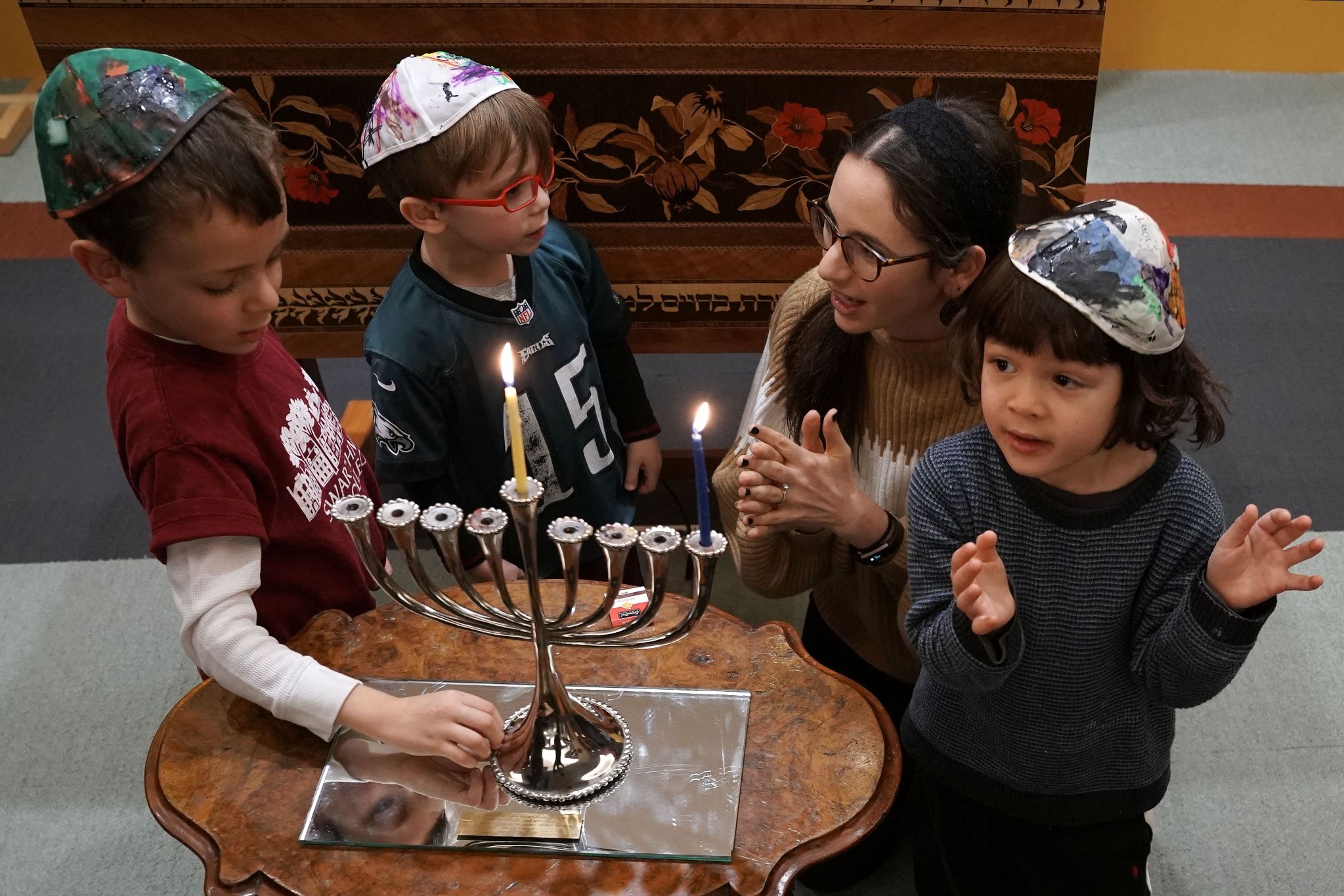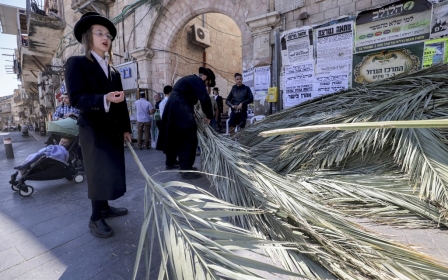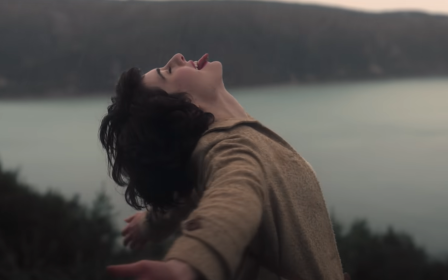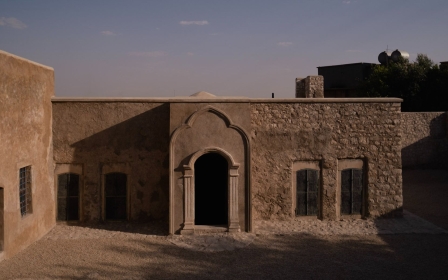What is Hanukkah? The Jewish festival of lights explained

This week, Jewish people around the world will be celebrating Hanukkah, also known as the festival of lights.
The celebration commemorates the Jewish revival in Jerusalem after their acts of worship were banned by the Greco-Syrian ruler Antiochus IV, around the year 168BC.
The story doesn't appear in the Torah because the events occured after it was written, and as such it's not a religiously ascribed holiday. But it is mentioned in the New Testament and holds a special place in the hearts of those who celebrate it.
Here, Middle East Eye answers some key questions about Hanukkah.
What are the origins of Hanukkah?
New MEE newsletter: Jerusalem Dispatch
Sign up to get the latest insights and analysis on Israel-Palestine, alongside Turkey Unpacked and other MEE newsletters
The word Hanukkah comes from the Hebrew word for dedication. It refers to the rededication of the Second Temple after Judah Maccabee led his people - known as the Maccabees - in a three year battle against the Greco-Syrian Seleucid Empire.
Antiochus IV had outlawed the Jewish religion, with Jews ordered to worship Greek gods, and an altar to Zeus erected inside the Second Temple.
During the revolt, the Maccabean Jews defeated the Greco-Syrians and regained control of the temple. After cleaning and repairing the place of worship, they rededicated it to the Jewish faith. To celebrate their victory they lit a multi-branched gold candelabra known as a menorah that was found in the temple.
According to tradition, the Maccabees could only find one small jar of oil, enough to keep the commemorative menorah lit for one day. They knew it would be another eight days before they could acquire more oil. As the story goes, the oil miraculously lasted for eight days, keeping the menorah burning until they could get more.
When is Hanukkah celebrated?
Hanukkah, also sometimes known as the festival of lights, or the feast of dedication, begins on the evening of the 25th of the Hebrew month of Kislev. The coinciding date in the Gregorian calendar changes every year, but always falls in November or December. This year, Hanukkah begins on 28 November and ends on 6 December.
The Hebrew calendar is lunisolar, meaning it is regulated by the positions of the moon and the sun. Months follow the lunar cycle, whereas years follow the sun's. A lunar month is added periodically seven times every 19 years in order to synchronise the 12 lunar cycles of the year.
The holiday, which usually falls in winter, is a relatively minor holiday from a religious point of view since its observance is not mandated by the Torah. Rather, it is a festival celebrated by ancient rabbis wanting to commemorate the historical event.
Unlike major festivals like Yom Kippur and Sukkot, most Jews go to work or school for the duration of the holiday. But while it may not have great religious importance, it has become culturally significant across the world.
How is Hannukah observed?
Jews worldwide celebrate the holiday by reciting daily prayers and blessings and offering thanks to God before lighting the menorah on each night of the festival.
There are three Hanukkah blessings that are sung for lighting the menorah, the third of which is only sung on the first night.
The menorah has nine flames, with the first flame known as the shammash, or the attendant. This flame is used to ignite the others. Olive oil was traditionally used for lighting the menorah but it was eventually replaced by candles.
What do people eat during Hanukkah?
Because the Hanukkah miracle centred on oil, it is customary for those celebrating to eat fried foods.
Latke, a fried potato pancake, is a popular choice, eaten either sweet with a dollop of apple sauce or savoury with sour cream. Sufganiyot, a deep-fried doughnut typically filled with strawberry jam, is another well-loved treat enjoyed during the holiday.
Other foods present on the Hanukkah table might incude beef brisket - often served with carrots and potatoes - roast chicken and matzo ball soup.
Children are also often given chocolate money during the celebration.
What are some Hanukkah traditions?
During Hanukkah, children often play with a dreidel, a four-sided spinning top bearing the Hebrew letters nin, gimmel, hei, and shin, an acronym for nes gadol haya sham, which means, "a great miracle happened there".
The game is usually played using gelt, wrapped chocolate coins, or nuts, which are won or lost based on which letter the dreidel lands on.
Gifts of money are also given to children, some to keep and some to give to charity, which is known as tzedakah.
Similar to the tradition of Christmas, which takes place around the same time of year, some people tend to give gifts during Hanukkah. As such, the celebration has evolved into the main gift-giving holiday in the Jewish calendar.
This article is available in French on Middle East Eye French edition.
Middle East Eye delivers independent and unrivalled coverage and analysis of the Middle East, North Africa and beyond. To learn more about republishing this content and the associated fees, please fill out this form. More about MEE can be found here.









